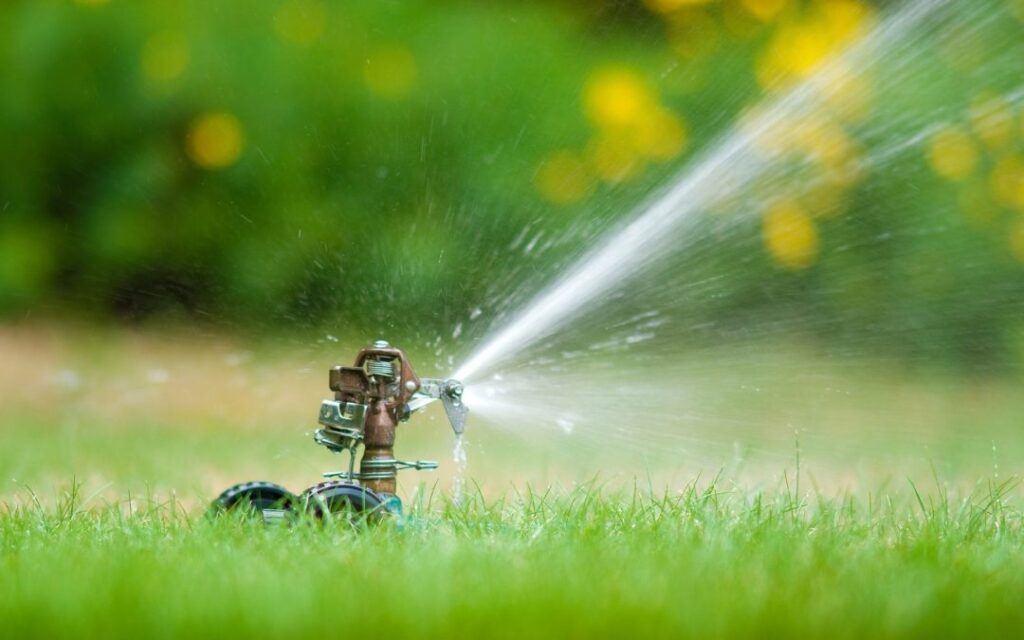You can go with this, or you can go with that...
Many Phoenix homeowners can confirm that backyard ponds have become an exciting trend and a desirable landscape design and home improvement option over installing a water-hungry and time-consuming lawn.
The goals for opting for a backyard pond range from fish collecting to plant collecting to just having the sight and sound of water. Ponds create a respite from our techno-crazy world, and a haven for prized Koi and other wildlife. Yet few people realize the countless environmental benefits to installing an ecosystem pond or water feature.
According to the National Gardening Association’s 2008 Environmental Lawn and Garden Survey, 9 out of 10 households believe that it’s important to maintain their landscape in a way that benefits the environment. However, only about half of those are knowledgeable about how to maintain lawns and gardens in an environmentally friendly way. Many people don’t realize that by replacing some (or all) of their lawn with a pond or water feature, they can conserve water and energy, save money, and support the environment – not to mention reduce the stress of being a slave to maintaining a good-looking lawn.

LAWNS USE A LOT OF WATER
According to the University of Arizona, the average 15’x15′ Bermudagrass lawn consumes over 5000 gallons of water per year. A typical residential turf sprinkler system broadcasts about 10–18 gallons per minute, per valve or zone. By the way, broadcasting water like that increases evaporation, and the lawn doesn’t really receive as much water as is being broadcast. So, if a lawn has two zones and waters for 15 minutes three times per week, the water consumption would range between 4,500 and 7,560 gallons per month. In Phoenix, that would equate to about $157.50 to $264.60 per month on your water bill, and those rates are constantly going up.

Evaporation on a pond is the same as on a swimming pool: 1” per day per of surface area during the hottest, driest months of the year (typically mid-May through mid-June). During the rest of the year, the evaporation measurement is negligible. AND you’re not adding water during monsoon storms and rainy days. Unless you have one of those expensive timers that detects the moisture in the air and doesn’t water a when it’s raining, your lawn gets watered no matter what. A pond will have an autofill device that only adds water when it’s needed.
LAWNS REQUIRE MORE MAINTENANCE THAN PONDS, IN GENERAL
Maintaining a lush good-looking lawn obviously requires regular watering, as described above. But there’s also a LOT more that goes into maintaining a nice-looking lawn. You also have to fertilize it. When not done properly, runoff of excess fertilizer causes groundwater pollution. The EPA estimates that only 35% of lawn fertilizers applied ever reach the grass plant. The remainder ends up in our air or seeps into our water supply. Yuk! During a typical year in neighborhoods across the country, over 102 million pounds of toxic pesticides are reportedly applied in pursuit of that perfect lawn and garden, says the National Coalition for Pesticide-Free Lawns. Is your “little patch of estate” worth contributing to the destruction of our water supply?
And you have to mow and edge it, enslaving the average man (or woman) for at least half a day on any given weekend. Aside from the time involved, about 54 million Americans mow their lawns each weekend, using 800 million gallons of gas per year, AND producing tons of air and noise pollution, according to the US Environmental Protection Agency (EPA).
Garden equipment engines emit high levels of carbon monoxide, volatile organic compounds, and nitrogen oxides, producing up to 5% of the nation’s air pollution (and a good deal more in metropolitan areas). A traditional gas-powered lawn mower produces as much air pollution as 43 gas cars, each being driven 12,000 miles. Lastly, more than 17 million gallons of gas are spilled each year refueling lawn and garden equipment. To put that into perspective, that’s more than the amount of oil that was spilled by the Exxon Valdez in the Gulf of Alaska. And this all adds to groundwater contamination and smog, the EPA reports.

Ponds, however, eliminate the need for pesticides and fertilizers. They require about 10 minutes of maintenance per week, on average, and pay you back with hours of enjoyment. And they certainly don’t require any gas-powered equipment. As an added benefit, the debris and sludge collected by your pond filter can be used as a nutrient-rich fertilizer for your lawn, garden, and trees.
Don’t get us wrong, if you have a bunch of kids that need a football or soccer field to play on, then by all means, plant a lawn! Or you could make use of a nearby park and let the City deal with the time and cost of the maintenance. But if you’re looking for a low water use, low maintenance, super enjoyable and entertaining landscape option, you might want to consider an ecosystem pond or water feature.






Serving Phoenix, Scottsdale, Glendale, Arizona (AZ) & Surrounding Areas
For more information on Pond Construction: https://pondgnome.com/pond-construction-phoenix-az/

